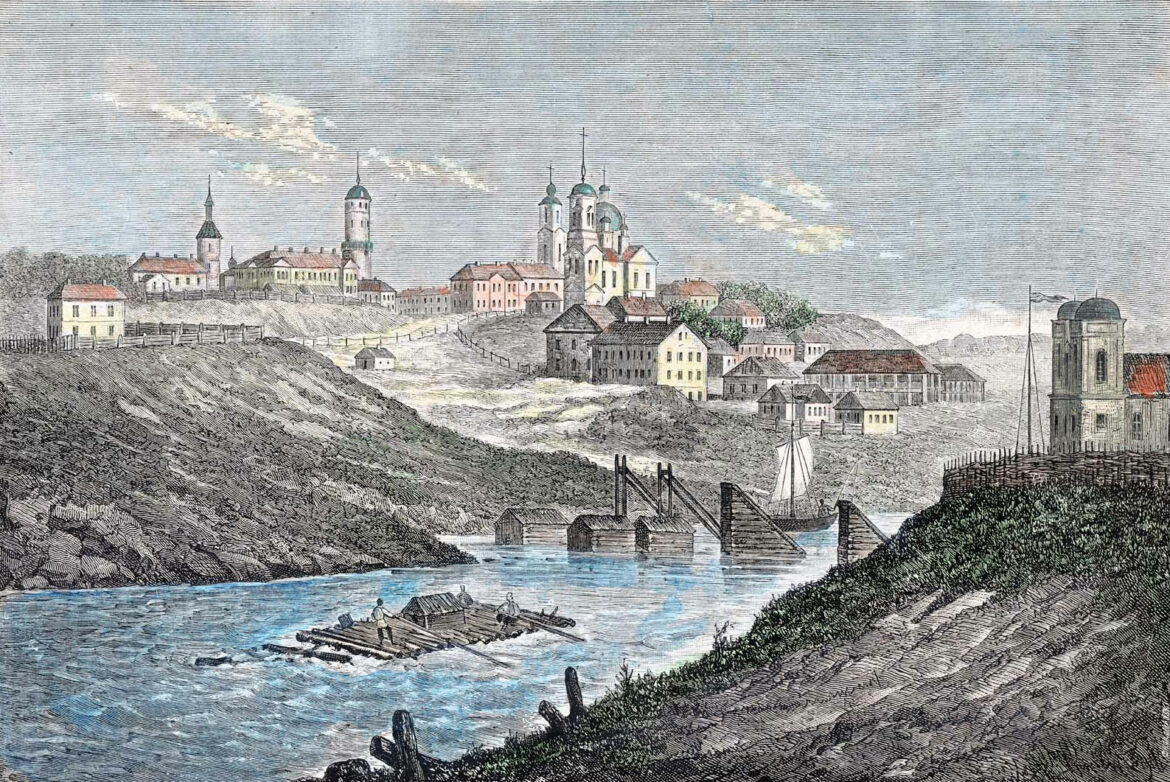Inhabitants of Mohylew (today’s Mogilev) in eastern Belarus became free on the morning of March 7, 1918, when Polish soldiers entered the city. The Bolsheviks were expelled, there were no more anti-Jewish pogroms neither criminal Soviet secret-police Cheka. Orthodox churches, catholic churches and synagogues, private shops and restaurants were reopened. Life seemed to be returning to normal. Wherefrom did the Polish soldiers come to Mohylów, although their country did not exist yet?
During World War I, several Polish infantry and cavalry squads fought against Germany on the Russian side. In August 1917, the Russian command decided to form them into the 1st Polish Corps that consisted of three divisions of infantry, artillery and cavalry. The commander was Józef Dowbor Muśnicki, who was considered one of the most talented generals of the tsarist army. He took care of training and discipline: there were no revolutionary committees in his army, the soldiers wore neatly buttoned up in clean uniforms, followed the orders of the officers, saluted the higher-ranked officers. All this seemed unusual in comparison to the demoralized Russian army.
After the Bolsheviks took power in Russia on November 7, 1917, the Polish troops turned out to be the only ones that did not disintegrate. Therefore, they became the first target of the attack of Lenin’s Red Guard. The soldiers of General Dowbor did not intend to surrender and repelled the attacks. There was a severe winter with temperatures below -20 degrees Celsius. Weakened Polish forces, in order to survive, had to acquire a permanent base to provide accommodation and food supplies. The general chose Bobruisk (today’s Babruysk), a city and fortress, manned by a demoralized Russian garrison of several thousand soldiers. On the night of February 3, 1918, Polish assault groups took over strategic points of the city. In the morning, the Russians laid down their arms. Poles captured the base and supply depots without a shot. This event became a turning point in the conflict. Polish soldiers believed in their victory.
Being headquartered in Bobruisk, the Polish squads repelled the Bolsheviks successfully. The Polish troops replenished the equipment in the city and after a short rest, they were sent back to combat. The struggle lasted over a month. Fierce battles continued near Rohachev and Zhlobin, from where the Poles had to retreat under the enemy pressure. But at Toshchyca, a squad composed of Polish officers defeated the attacking enemy after several days of fighting.
The area controlled by Poles gradually expanded. Two armoured trains and their crews took part in the fights. The fire of cannons and machine guns made the way for infantry and cavalry. In the second half of February 1918, the Polish forces began the counter-offensive, liberating the Rohaczev and Zhlobin, and expelling the Bolsheviks beyond the Dnieper. On March 7, the large governorate city of Mohylew was liberated. For the time being, Belarusian Minsk was also temporarily taken, but the Poles had to leave under the pressure of the German army.
The appearance of German forces in the vicinity of the 1st Corps changed the situation for Poles. General Dowbor-Muśnicki started negotiations with the German command and signed an agreement sanctioning the presence of the Polish army in eastern Belarus, between the territories occupied by Germany and controlled by the Bolsheviks. Officially, the 1st Polish Corps was recognized as a neutral unit. On this basis, between the Berezina and the Dnieper, Poles created an autonomous enclave, equal to the area of half of Nederland. It was the first liberated part of the historic Republic of Poland, ruled independently by Poles. Its capitals were Bobruisk and Mohylew.
“It was a peculiar and unique moment. On an island surrounded by an ocean of Bolshevik barbarians on one side, and by Hindenburg’s iron forces on the other, there was a handful of the independent Polish army. Nobody ordered us, we were a liberated and proud Poland. We had only God above us and our commander with us,” recalled the writer Oksza-Grabowski.
For the inhabitants of the liberated territories including Poles, Belarusians, Jews or Russians, the most important thing was a long-awaited relief after the horrors of Bolshevik rule. The legal order was restored by eliminating revolutionary lawlessness. The decrees abolishing private property were annulled, and the owners regained lost property and houses. Free press was published in Bobruisk and Mohylew, white and red flags were flown at offices, and the post office issued Polish stamps with the Polish crowned eagle. As witnesses recalled, both provincial cities turned into centers teeming with life. The dominant languages in the streets were Polish and Yiddish. There were social organizations, schools and a theater. Social life flourished, cafes and restaurants were opened.
Jews were the majority of the inhabitants of Bobruisk and a large part of Mohylew. The expulsion of the Bolsheviks gave them the opportunity to return to business, but also ensured safety against the pogroms that were commonplace in revolutionary Russia. Also. the local landowners, who suffered from attacks on their courts, during the revolution, were relieved. The security of that oasis of normality was constantly supervised by Polish soldiers.
The success of General Dowbor-Muśnicki disturbed the Germans, who were reluctant to see the presence of Poles in Bobruisk and Mohylew. In their vision of Eastern Europe, there was no place for Poland within its historical borders. They wanted to reduce it to a small country, with limited territories and that is why the Berlin authorities pressured to liquidate the Polish army. Eventually, Dowbor Muśnicki had to accept the German ultimatum and agreed to lay down the arms. The advantage of the opponent was too large, and the resistance was doomed to failure.
Polish soldiers left Bobruisk and Mohylew in July 1918. They were all guaranteed a free return home. But just a few months later, in November 1918, they took up arms again, disarming German troops in Warsaw and other cities, which brought independence to Poland.





